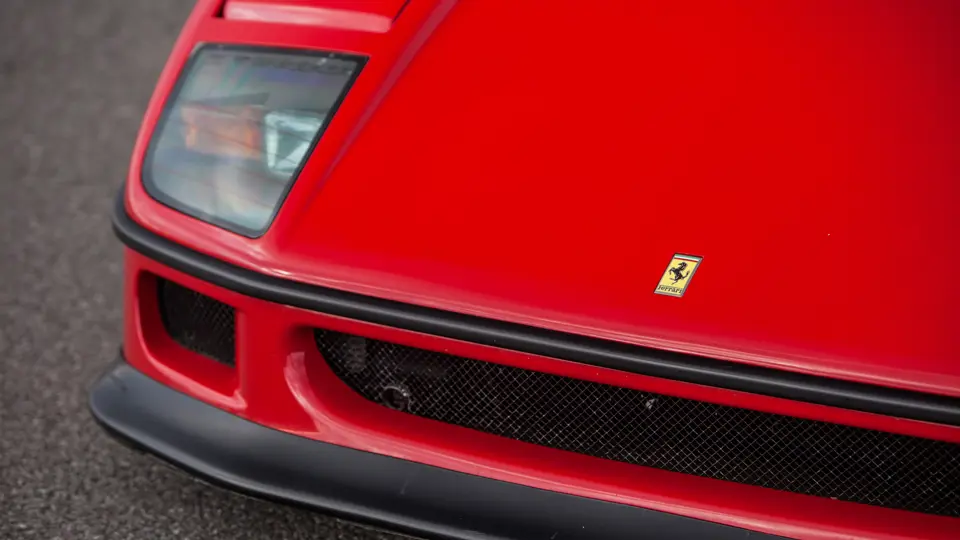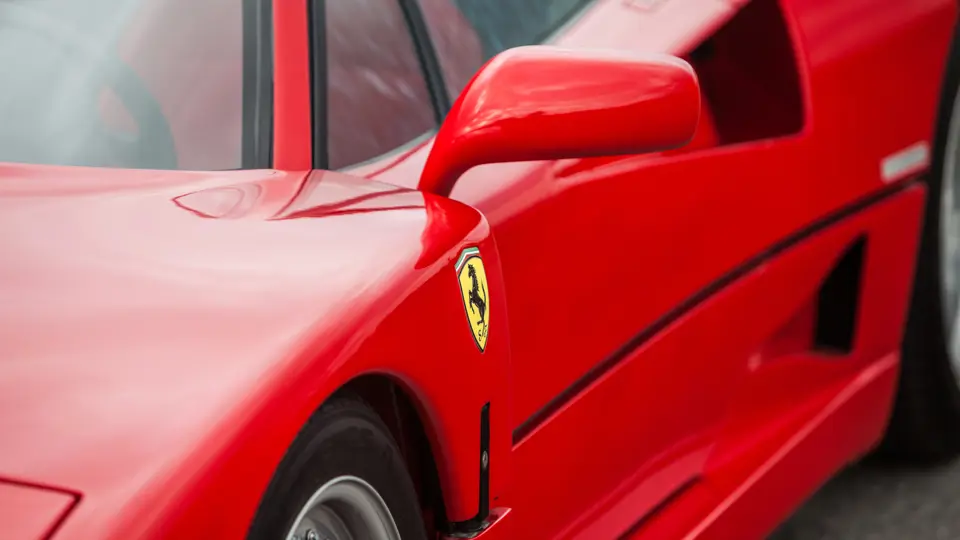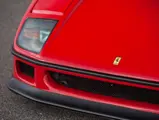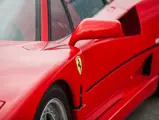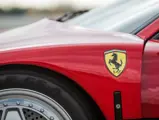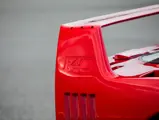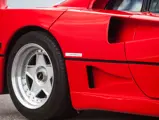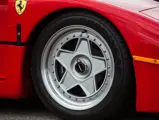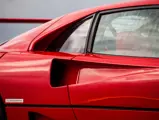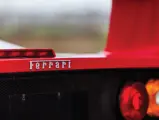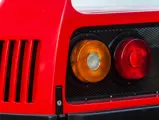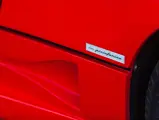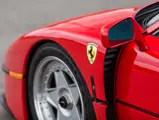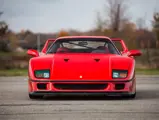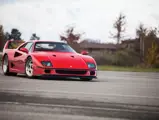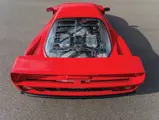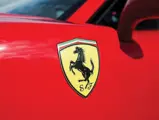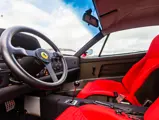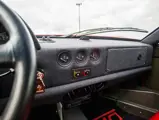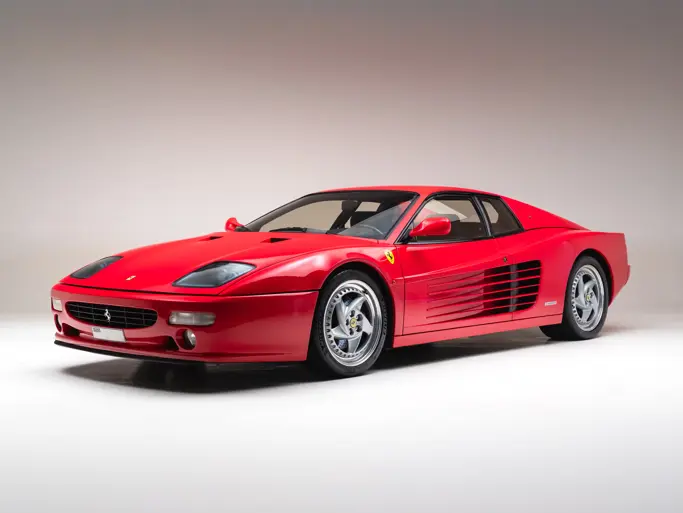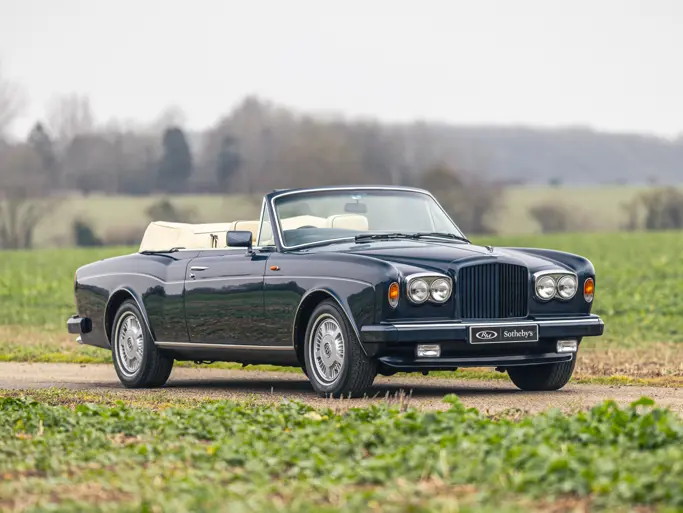478 bhp, 2,936 cc DOHC twin-turbocharged V-8 engine with Weber-Marelli fuel injection, five-speed manual transmission, independent front and rear double-wishbone suspension, and four-wheel disc brakes. Wheelbase: 96.5
In 1987, there was a supercar war raging between the big three European sports car manufacturers. Lamborghini’s Countach had turned the sports car world upside down with its radical styling and blistering performance. In 1986, Porsche’s innovative 959 introduced a number of automotive firsts and attained a top speed of 197 mph, claiming the title of the world’s fastest street legal production car. Enzo Ferrari, stubborn as he was, would not let that record stay in Stuttgart. Ferrari’s F40 was developed from Ferrari’s 288 GTO Evoluzione, and it broke a barrier akin to Glamorous Glennis breaking the sound barrier 40 years earlier: the F40 was the first production car to break 200 mph, registering a top speed of 201.4 mph.
The F40 was named in celebration of the Scuderia’s 40th birthday, and it was intended for a limited production run of around 400 units, but strong demand pushed the total production number to 1,311, with only 213 destined for the United States. Of course, Ferrari delivered F40s to enthusiasts all over the world, but every F40 to leave the factory bore Rossa Corsa paint and a left-hand drive configuration. Sadly, with Enzo’s death on August 14th, 1988, the F40 was the last car to receive the blessing of “Il Commendatore” before his passing, signaling the end of an era for one of the most iconic marques in automotive history.
It is easy to see why the F40 was so desirable. It featured a V-8 twin-turbo engine that could produce a monstrous 478 horsepower, and it pioneered the use of carbon fiber for its chassis, making the F40 a feather-light 2,400 pounds. Aesthetically, its sleek design was an example of form following function, providing both high-speed stability and fantastic airflow to the engine to keep it from overheating. Once one has carefully slide into the lightweight bucket seats, it is instantly clear that the F40 makes no compromises in the pursuit of performance. It was stripped out for racing: it had no carpets, it utilized door pulls instead of traditional handles, and it could be optioned with roll-up or fixed windows (installing power-operated windows was simply out of the question) in order to save weight. In 1987, the list price was roughly $400,000, but many traded hands for much more than that at the time.
Chassis 87085 was finished in Rossa Corsa, with the distinctive red cloth Stoffa Vigogna upholstery, and it was the 79th of just 213 examples originally intended for the U.S. market. Shortly after its construction was completed in Maranello, the car was sent to its first owner, a Paul Goldenberg of La Habra, California. Goldenberg both drove and showed his car frequently, and it made appearances at both the Ferrari Owners’ Club U.S. Concours in 1991 and Concourso Italiano in 1993. The F40 left Goldenberg’s ownership, with just 6,000 miles on the odometer, when it was traded to Ferrari of Beverley Hills for a new F50 in 1995. Five years later, the F40 returned to the inventory of Ferrari of Beverly Hills and was sold in December 2000 to a resident of Illinois.
In 2002, chassis 87085 returned to its second home in The Golden State, when it had the privilege of joining the collection of the Petersen Automotive Museum in Los Angeles. There, it was displayed as not only one of the finest examples of the F40 extant but also as one of the most important automobiles to ever wear the Cavallino Rampante. During its time at the Petersen, this car accumulated less than 100 miles, it was stored in a climate-controlled environment, where it was viewed every year by hundreds of thousands of car enthusiasts, and it remained in fantastic condition.
Upon departing the Petersen Museum, this F40 was recommissioned for more frequent use by Norbert Hofer at Gran Touring Classics in Long Beach, California, to ensure that the car would function as it should. More recently, it was fully serviced by Autosports Design in Huntington Station, New York, to the tune of $15,000. There, this F40 was brought back to very good mechanical specification, and it is now more than ready to be enjoyed at speed by its new owner. It remains nearly as original as the day it left the factory, with the odometer reading less than 7,500 miles from new, and it is accompanied by its original tool roll, owner’s handbooks, and a period-correct Pioneer stereo. As with any car that has remained static for a prolonged period of time, it could use a minor cosmetic refreshing to bring it back to show-ready condition.
As the last car to gain the approval of Il Commendatore before his passing, the F40 is an icon in our own time. An F40 is often considered to be one of the most visceral experiences one can have on four wheels, and it is surely not a car for the faint of heart, but it is the perfect automobile for someone who wants to experience one of the greatest analog supercars ever produced. Its performance credentials still stand tall when pitted against supercars produced today, proving that all the engineering beneath its Rosso Corsa paint was years ahead of its time. As such, a car of this caliber is surely worthy of a place of distinction in any enthusiast’s garage.





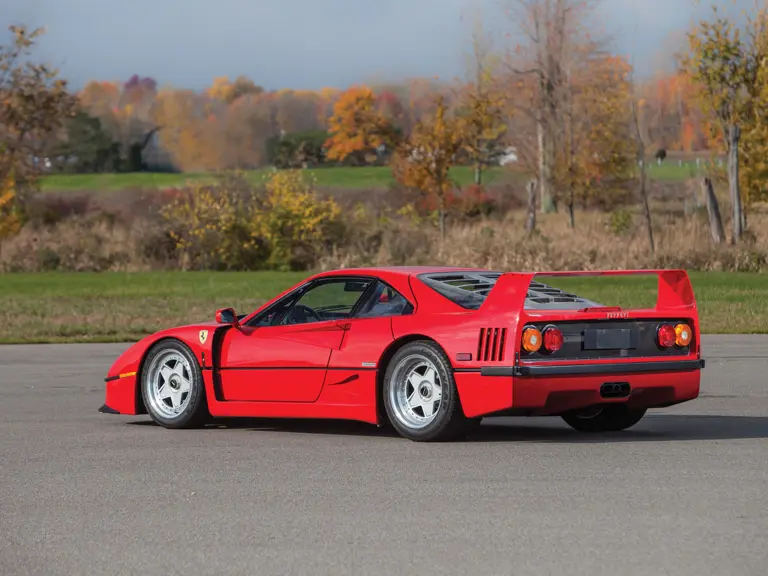
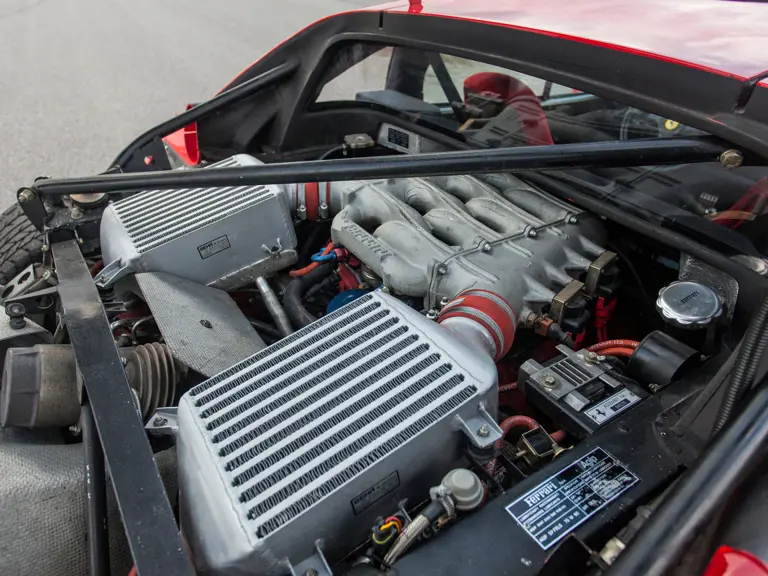
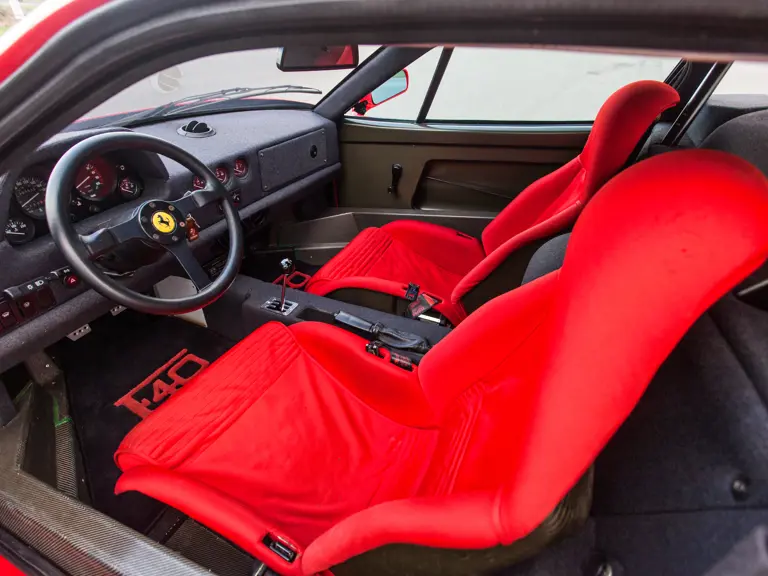
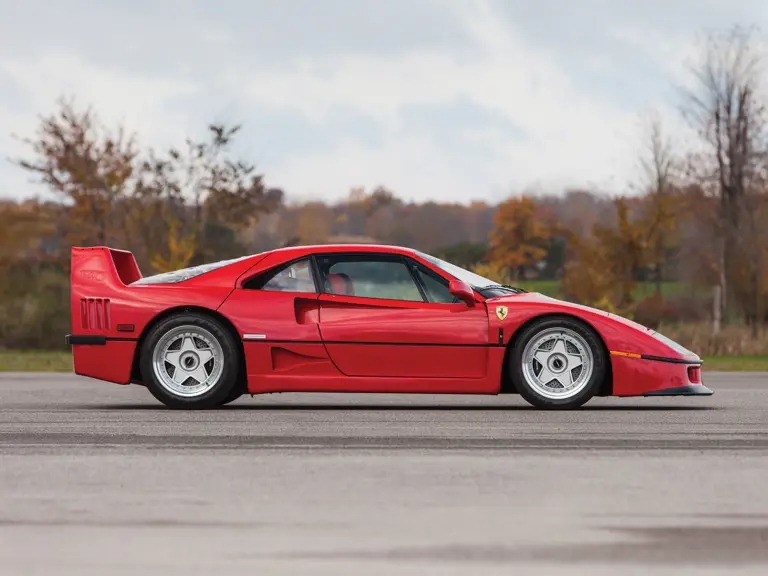
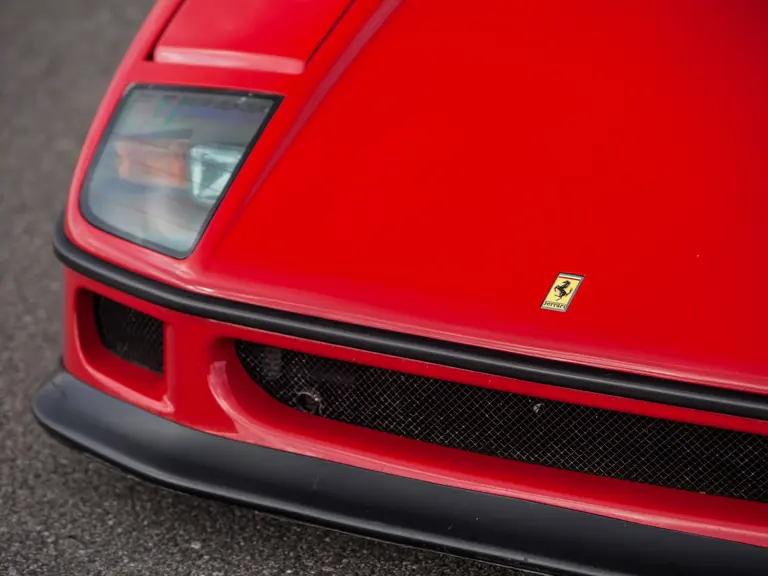
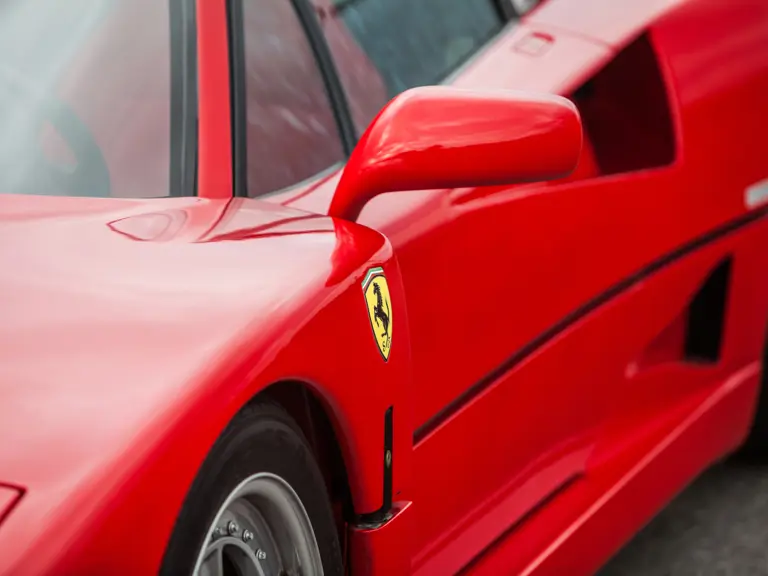
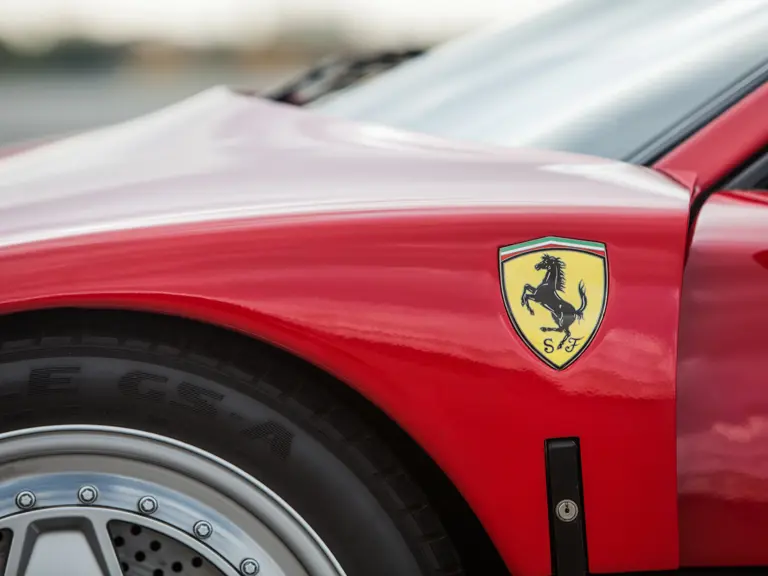
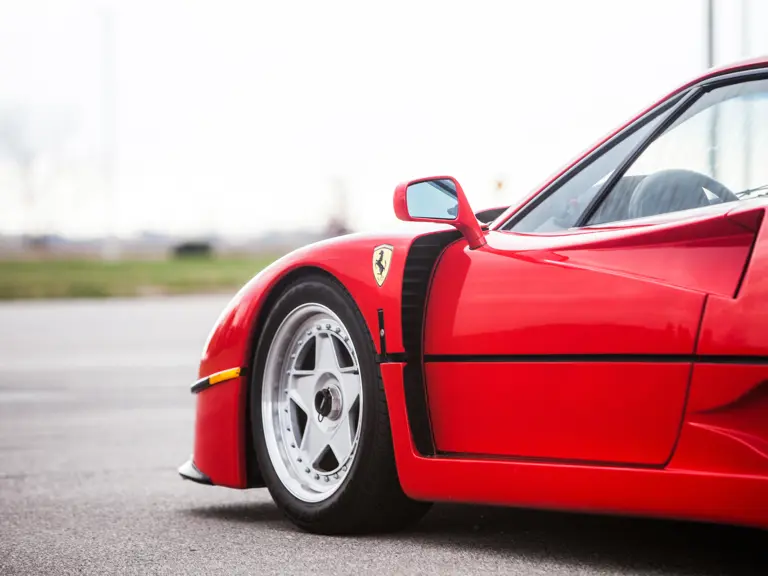
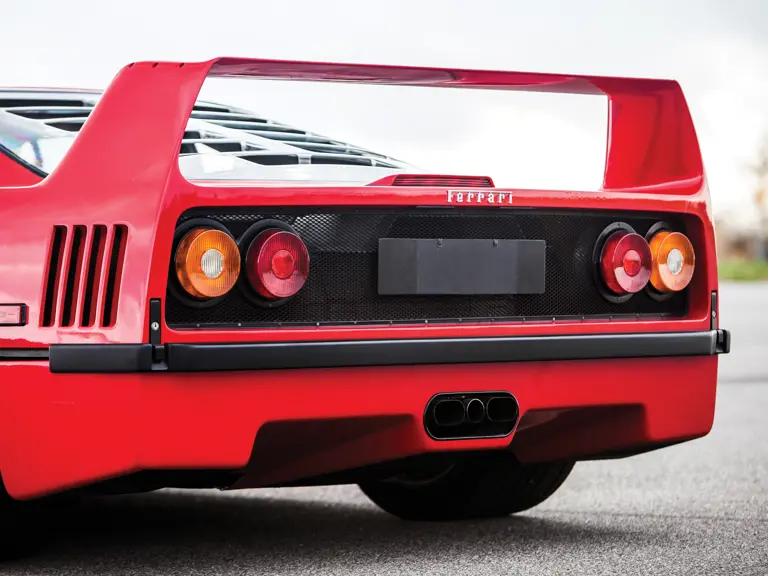

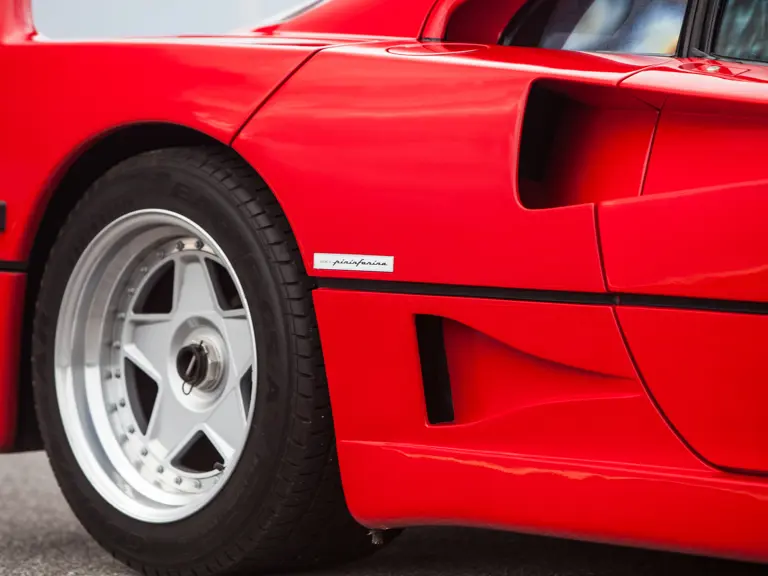
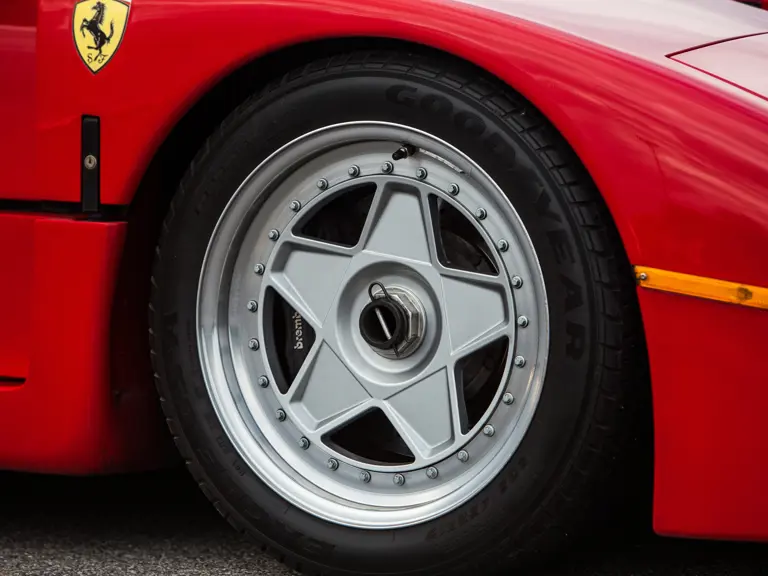
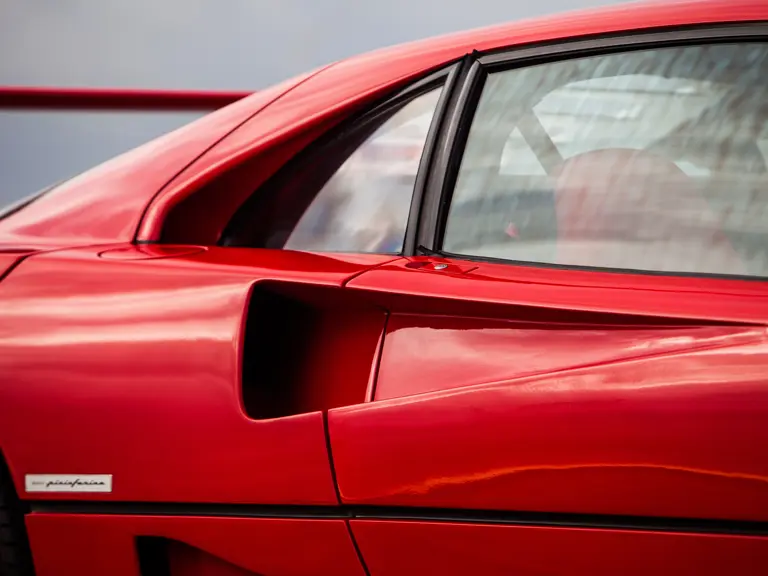
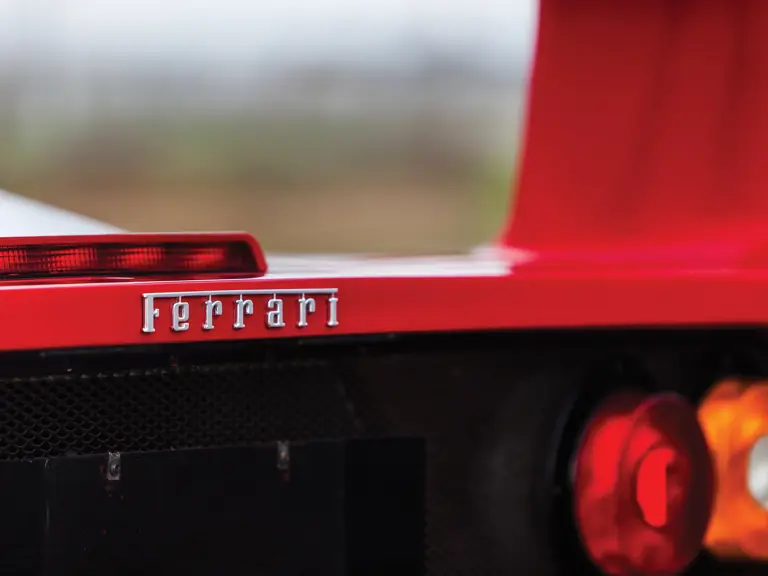
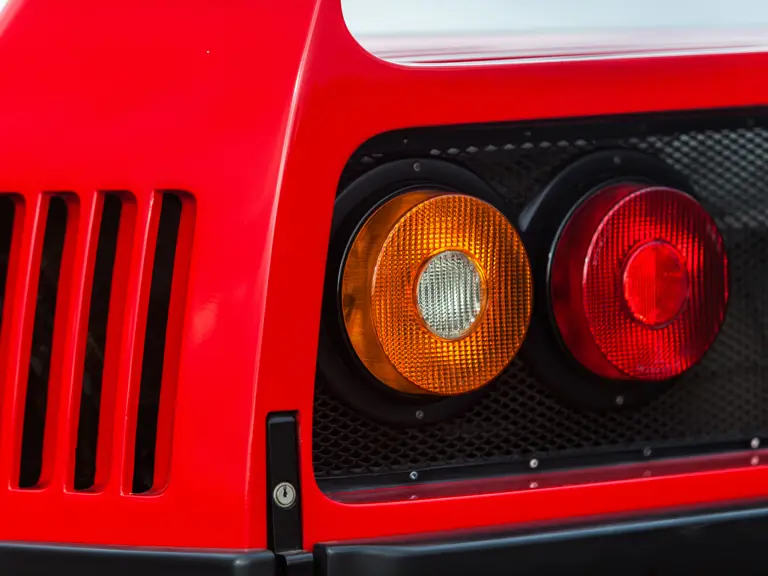
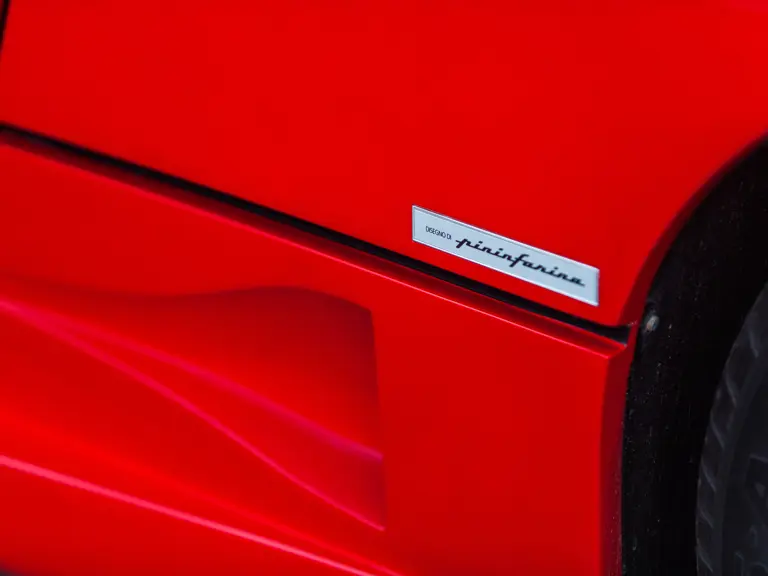
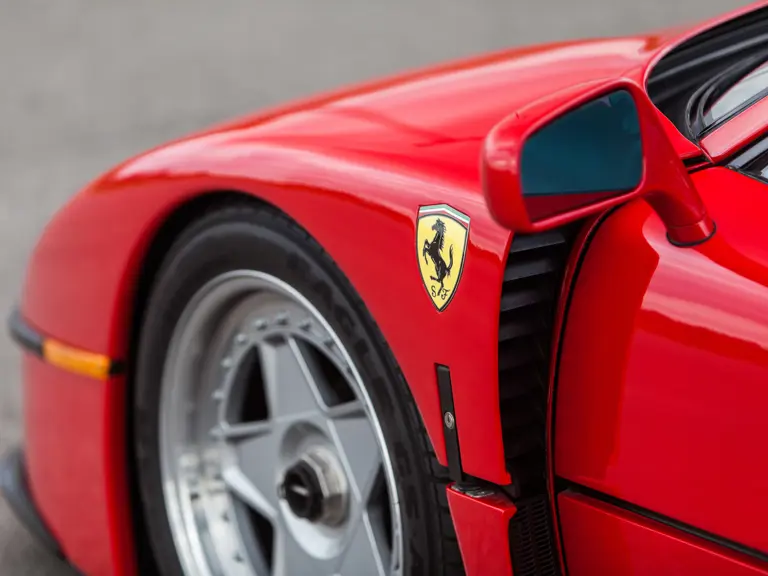
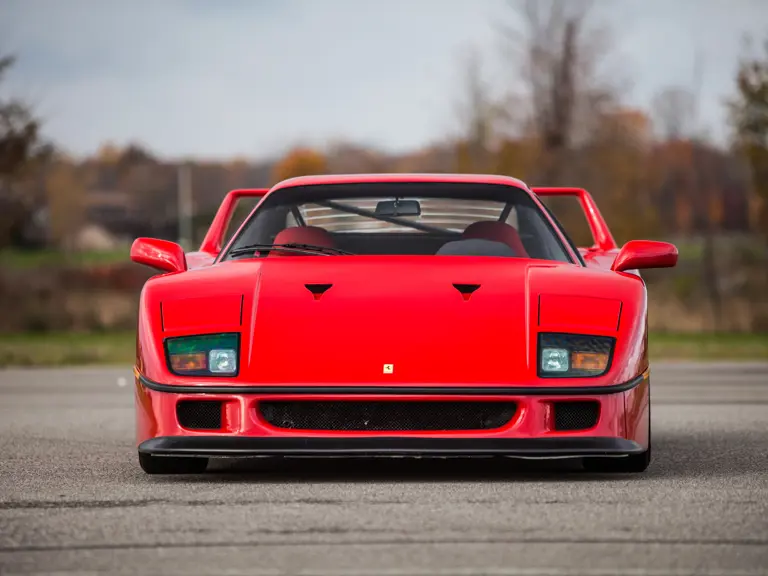
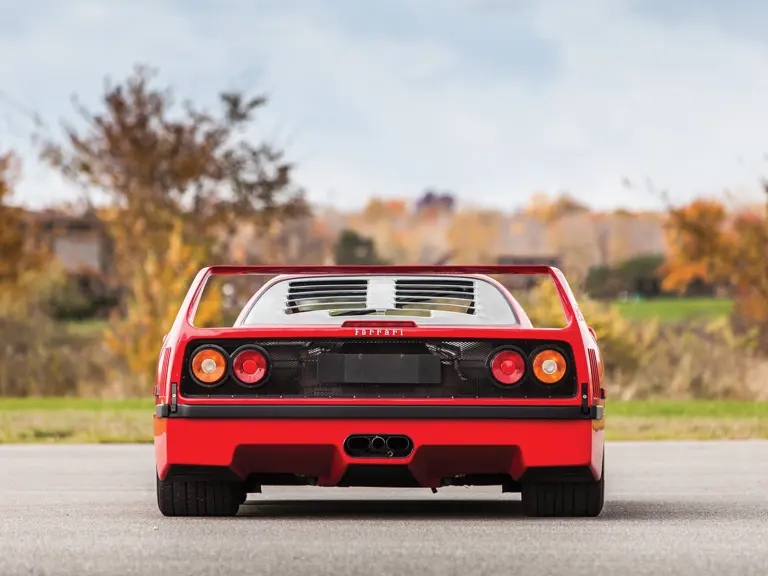


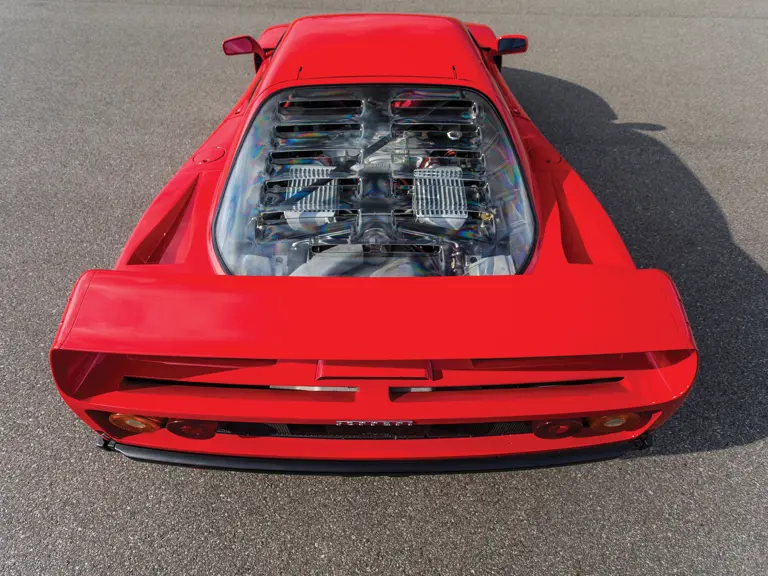
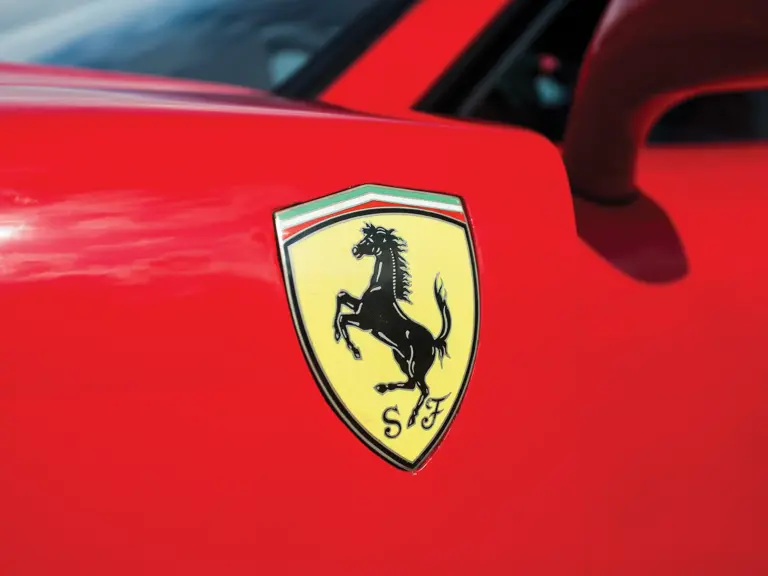
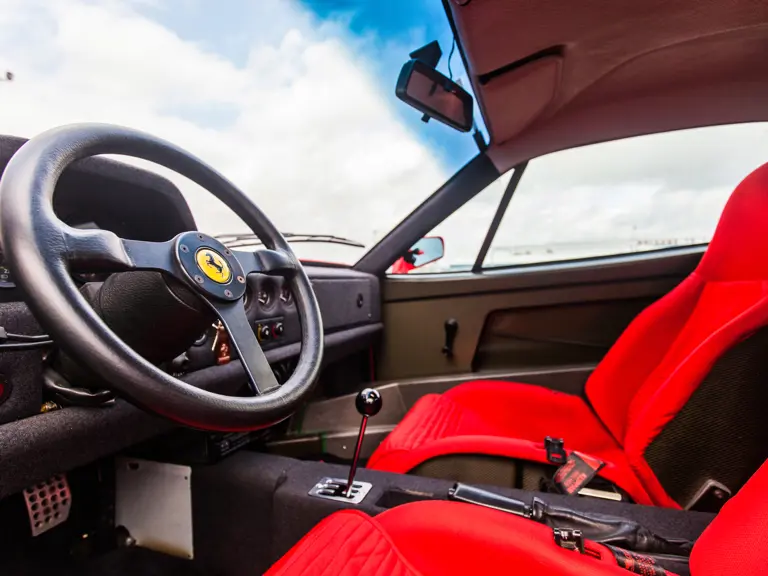

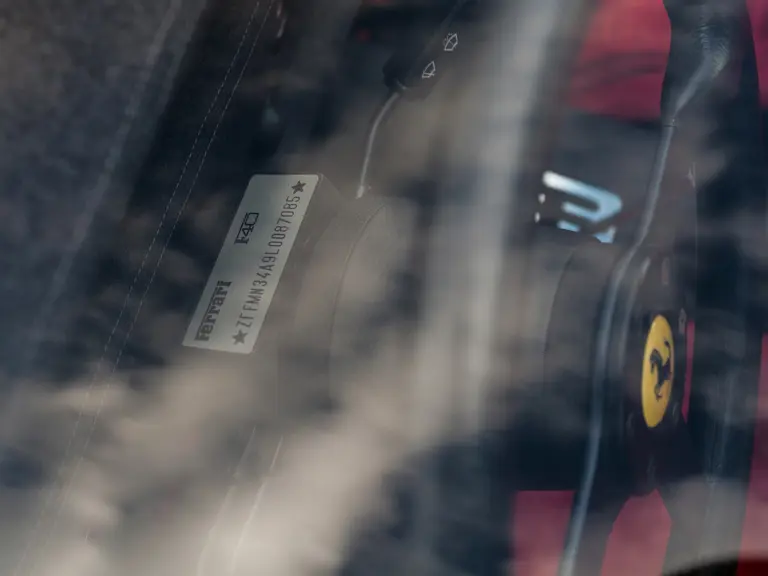
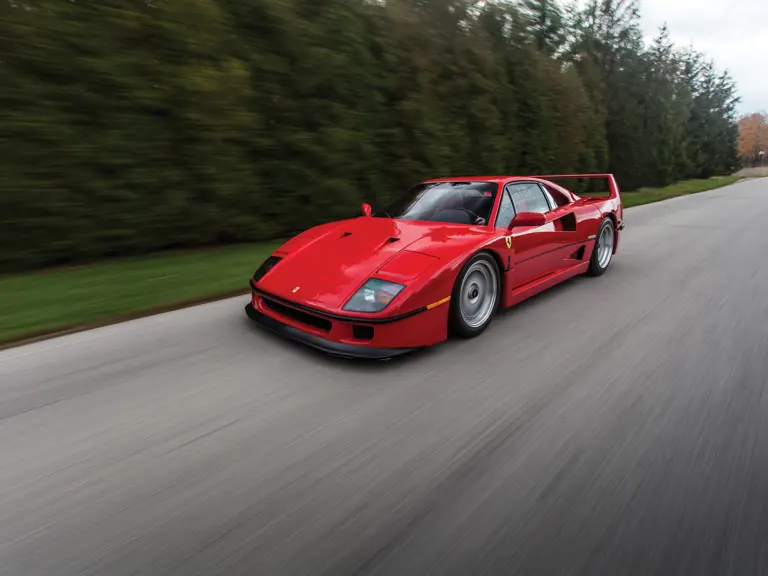
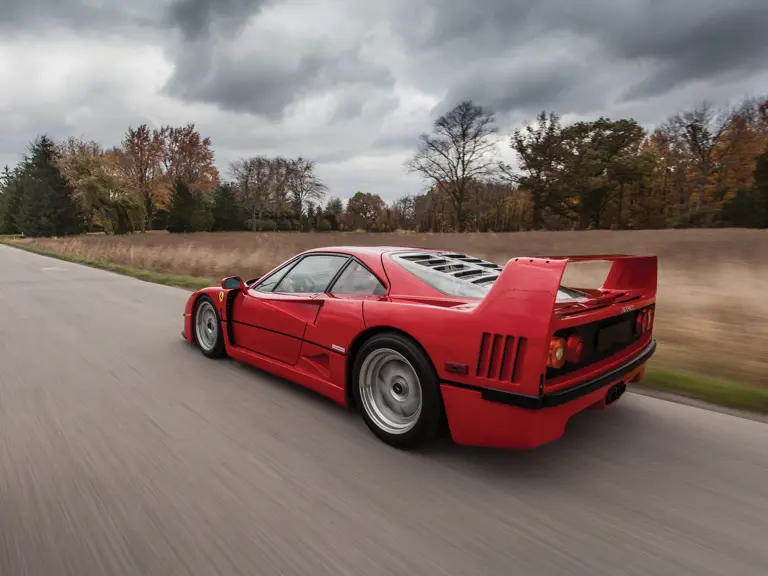
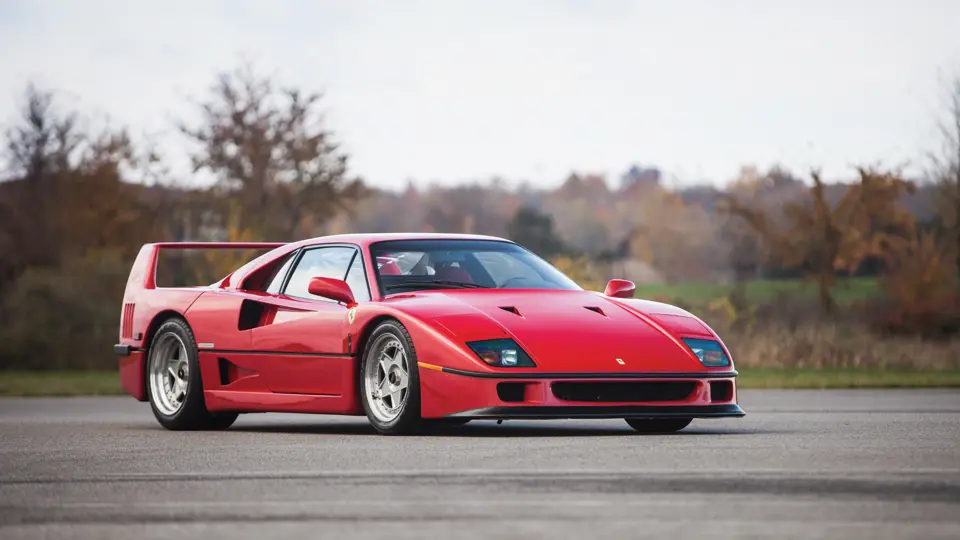
 | Phoenix, Arizona
| Phoenix, Arizona

